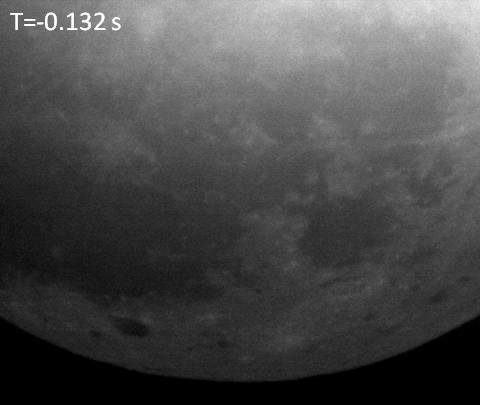For centuries, people have noticed strange, fleeting flashes of light on the Moon. Long pushed aside as optical illusions or observational errors, these eerie bursts eventually captured the attention of the scientific community.
While observations of odd light blips on the Moon have been reported since the 17th century with the rise of telescopes, unconfirmed sightings have been chronicled as far back as the Medieval period.
In 1178 CE, the English monk Gervase of Canterbury wrote: “There was a bright new moon, and as usual in that phase its horns were tilted toward the east; and suddenly the upper horn split in two. From the midpoint of the division a flaming torch sprang up, spewing out, over a considerable distance, fire, hot coals, and sparks.”
“Meanwhile, the body of the moon which was below writhed, as it were, in anxiety, and, to put it in the words of those who reported it to me and saw it with their own eyes, the moon throbbed like a wounded snake. Afterwards, it resumed its proper state. This phenomenon was repeated a dozen times or more, the flame assuming various twisting shapes at random and then returning to normal,” he added.
It’s described in colorful, unscientific language, but the 847-year-old account is widely believed to reference what we now call “transient lunar phenomena” (TLP), a term coined by Sir Patrick Moore, the British amateur astronomer and monocle-wearing eccentric who had been observing the lunar surface for decades.
“There has been a great deal of recent discussion about TLP or transient lunar phenomena. My only qualification for discussing them is that I have been watching for them over a period of almost forty years, and have recorded several, but it was only in recent years that they have been accepted as real,” the late Moore wrote in 1977.
“They take various forms. Some are merely local obscurations, hiding surface detail which is normally visible; others are obviously coloured, generally red,” he added.

This sequence of 12 consecutive frames shows a bright flash detected on four frames during observations on March 1, 2017. The red arrows point to the location of the impact flash, near the edge of the frame.
TLP were once assumed to be very rare. Amateur astronomers would note they had only witnessed a handful of flashes after hundreds of hours of telescopic lunar observation. However, modern estimates suggest there could be up to eight flashes per hour across the entire surface of the Moon on average, according to the European Space Agency (ESA).
For some time, modern observations of TLPs were dismissed as optical illusions or tricks of the mind. But when scientists began taking the phenomenon seriously in the 1950s and ’60s, one leading theory emerged: the flashes were caused by hazes of gas seeping from beneath the Moon’s crust. As the cloud catches the sunlight, it appears to Earth-bound observers as a brief glow.
More recent studies have since confirmed that the lunar surface does occasionally belch out emissions of radon, and some scientists in the 21st century have continued to push the idea that gas seeps are the prime suspect.
However, today, the most common explanation is that TLPs are the result of rocks and other debris crashing into the Moon.
Since the Moon doesn’t have a thick, protective atmosphere like Earth, its surface is constantly showered with meteorites. It’s estimated that the lunar surface is smacked with around 33,000 golf-ball-sized meteoroids every year, not to mention larger rocks that hit every couple of years or so.
Between 2017 and 2023, ESA ran a project called Near-Earth Object Lunar Impacts and Optical Transients (or NELIOTA for short) that gathered data on lunar impacts by scanning for TLPs. From August 2019 to August 2023, their telescopes observed 113 confirmed and 70 suspected flashes. This led them to estimate that the entire Moon was likely “bombarded with 7.4 sporadic meteoroids per hour and up to 12.6 meteoroids per hour when the Earth-Moon system passes through a strong meteoroid stream.”
While meteorite impacts are the leading explanation for TLPs, it’s been noted that they don’t explain all reported sightings. Whether these outliers point to geological activity, an overlooked atmospheric phenomenon, or something stranger remains a bit of a scientific mystery.
Source Link: Odd Flashes Of Light Have Been Seen On The Moon For Centuries – Some May Still Defy Explanation